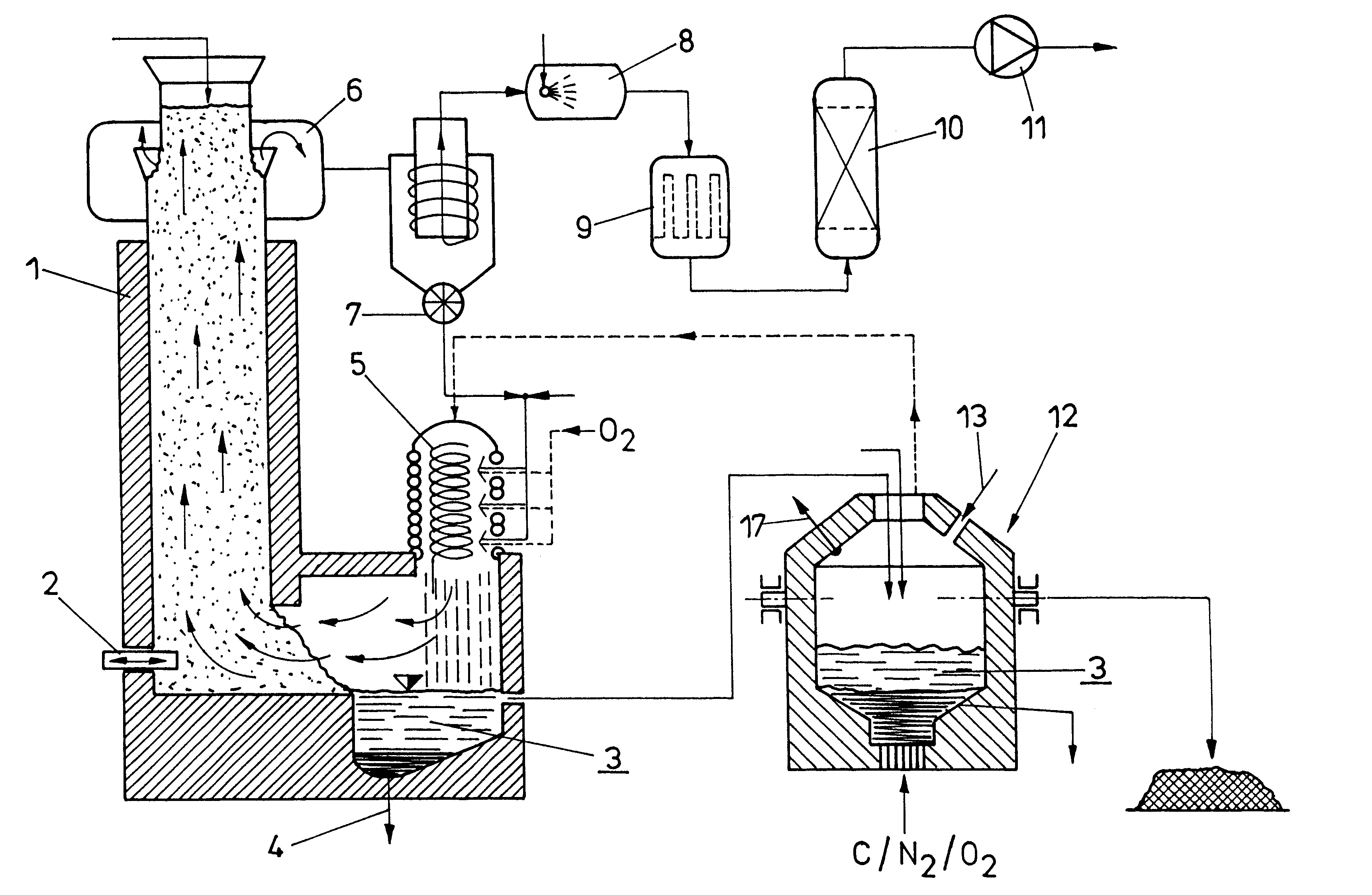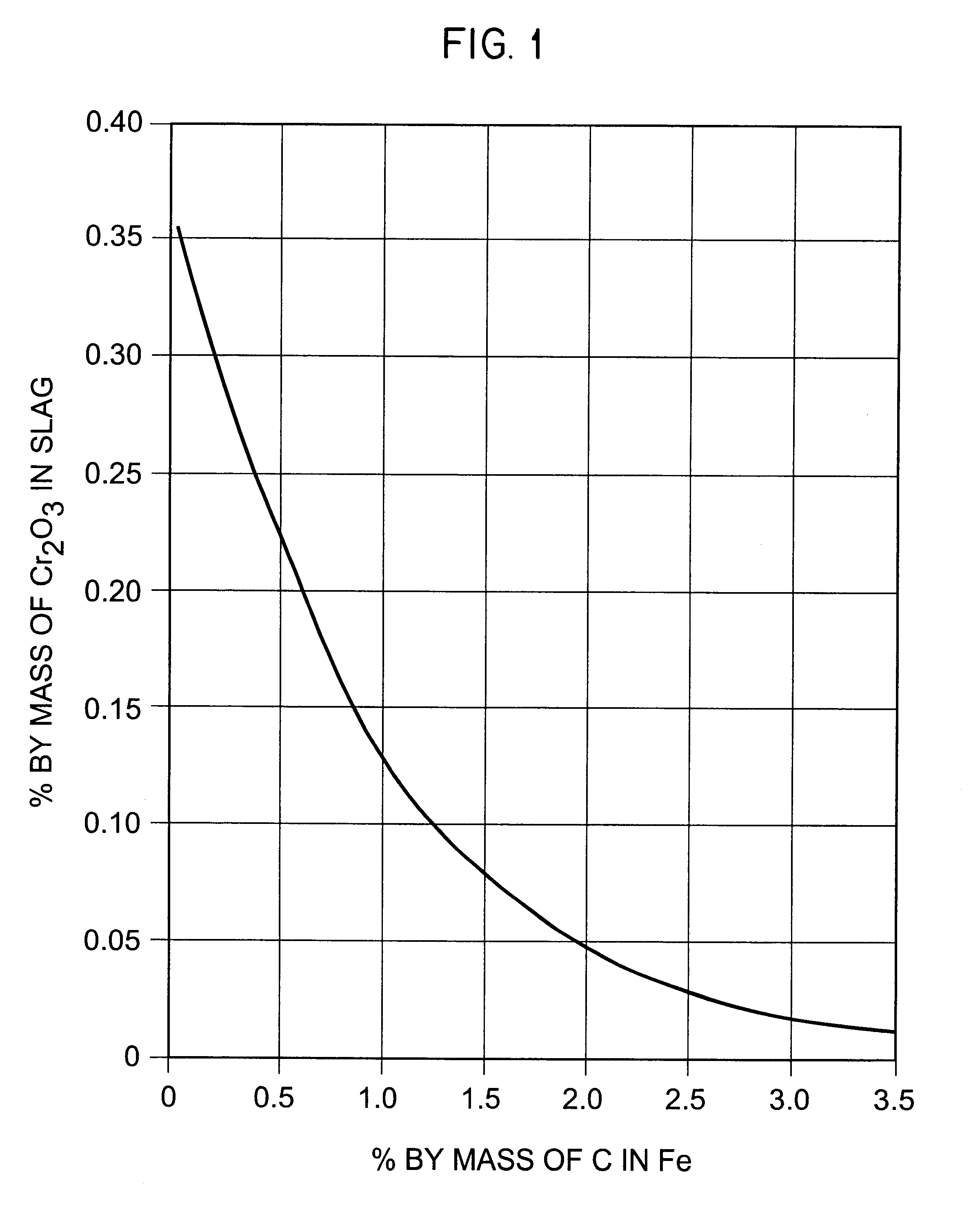Process for producing pozzolanes, synthetic blast furnace slags, belite or alite clinkers, or pig iron alloys from oxidic slags
- Summary
- Abstract
- Description
- Claims
- Application Information
AI Technical Summary
Benefits of technology
Problems solved by technology
Method used
Image
Examples
Embodiment Construction
Exemplary Embodiment
30 tons of molten pig iron and 20 tons of liquid slag mixed in a ladle at first were desiliconized, to which end lime was blown in. After this, coal was blown into the iron bath. The slag was charged in two equal portions, the second slag portion having been added after blowing in of 50% of the coal amount calculated for the total melt, and the residual amount of coal having been blown in. The chromium oxide content was reduced from originally 1200 ppm to 100 ppm within a period of time of less than 5 minutes, the carbon content of the iron bath amounting to a minimum of 2.65%. It was found in a number of tests that the decrease of the chromium oxide content in the slag to justifiable values could not be guaranteed with carbon contents of below 2% by weight.
As is apparent from FIG. 1, the chromium dioxide content in the slag with carbon contents of 2% by weight in the slag could be lowered to 500 ppm at the most, what does not appear acceptable for subsequent use...
PUM
| Property | Measurement | Unit |
|---|---|---|
| Height | aaaaa | aaaaa |
| Height | aaaaa | aaaaa |
| Temperature | aaaaa | aaaaa |
Abstract
Description
Claims
Application Information
 Login to View More
Login to View More - R&D
- Intellectual Property
- Life Sciences
- Materials
- Tech Scout
- Unparalleled Data Quality
- Higher Quality Content
- 60% Fewer Hallucinations
Browse by: Latest US Patents, China's latest patents, Technical Efficacy Thesaurus, Application Domain, Technology Topic, Popular Technical Reports.
© 2025 PatSnap. All rights reserved.Legal|Privacy policy|Modern Slavery Act Transparency Statement|Sitemap|About US| Contact US: help@patsnap.com



